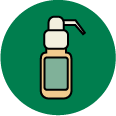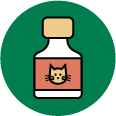What is an Allergy?
An allergy is an overreaction of the immune system to a harmless stimulus, such as dust, pollen, grass, pet dander, mold, etc. The immune system believes it is being invaded by a scary substance rather than a harmless allergen in the environment; and therefore, it rallies its defenses to fight off the enemy.
What are Allergy Symptoms?
The list of symptoms caused by allergies is longer than you might think. Primary signs of allergies include:
- Runny or congested nose
- Sneezing
- Watery and itchy eyes
- Asthma
- Frequent ear infections
- Sinus headaches
- Difficulty swallowing
- Nasal polyps
- Conjunctivitis (eye irritation)
- Muscle/joint pain
- Skin rashes and eczema
- Mental health instances, such as confusion, slow thinking, depression, anxiety, and forgetfulness
- Respiratory effects, including endless colds, chronic cough, recurrent bronchitis
Of course, there are many possible reasons for these symptoms. The only way to know if they are caused by allergies is to take an allergy test. Along with blood RAST testing, we also offer pain-free skin testing that provides answers in just 15 minutes. We can perform the test and read the results to you on the spot so your child can start getting some relief!
What Happens During a Skin Test/Allergy Test?
To test for allergies, we use the industry standard skin testing technique. Skin testing involves introducing a variety of suspected antigens or allergy-producing substances onto the skin through tiny plastic scratches. The test begins with the medical provider cleaning your skin on your back with an alcohol swab. This may feel cool and slightly wet. The medical provider will then gently press a M.A.S.T., or Multiple Allergy Skin Testing applicator onto the skin. The M.A.S.T. is a small eight-pronged comb with tiny tines at the end of it.
As the first set of antigens is applied to your skin, you’ll feel slight pressure from the tines of the testing device. This will last for just a few seconds and then be repeated in a few areas, depending on how many antigens are tested that day. You can expect a slight itching sensation as the positive results develop. The size of the reaction, both the wheal and flare (raised lump and surrounding inflammation), will be recorded at the end of 15 minutes.
It is a good idea to bring an iPad or a new toy for your child to look at during the 15-minute test, as it is a good distraction. It is important that the back is not scratched during this time. After 15 minutes, the back is wiped clean of the antigens. Hydrocortisone and Benadryl or Zyrtec are offered at the end of the appointment to ease any discomfort. The medical provider then will explain the results and discuss your options for treatment, if applicable.

What is SLIT?
(Sublingual Immunotherapy)
Unlike most allergy drugs—which treat only symptoms—sublingual immunotherapy addresses the underlying causes of allergies. Allergy drops are taken in gradually increasing doses until the patient develops a tolerance to the allergy-causing substance.
Low doses of harmless allergens are placed under the tongue where they are absorbed by tiny capillaries. These allergens then attach to dendritic cells, which in turn affect the TH2 cells in ways that reduce and/or eliminate allergies and related symptoms. Allergy drops are taken daily in your own home. Similar to traditional allergy shots, sublingual drops are taken for a period of 3-5 years.

What is SCIT?
(Subcutaneous Immunotherapy)
SCIT also addresses the underlying causes of allergies. Subcutaneous immunotherapy is the historical route of administration and consists of allergen extract injections. Injections are taken in gradually increasing doses until the patient develops a tolerance to the allergy-causing substance. Subcutaneous immunotherapy protocols generally involve weekly injections during a build-up phase, followed by monthly maintenance injections for a period of 3-5 years. Subcutaneous immunotherapy can only be performed with medical observation during a 30-minute office visit. This technique does have higher side effects and is not used in most countries except the U.S..
Nominated and Awarded
Most Loved Pediatrician!
Dr. Moyer clinched the 1st place Top Pediatrician in Lake Country, Dr. Schilz made his mark in the top ten, and Dr. Kolp-Jurss made a stellar appearance in the top 15 – it’s a powerhouse of exceptional dedication!



